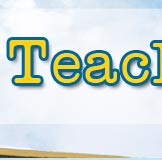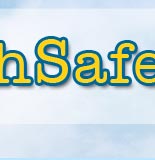|
- References on Bullying
- Books for Students: (Primary)
- Books for Students: (Intermediate)
- Literature for Parents
- Literature for Educators: Articles
- Literature for Educators: Books
- Videotapes and Films for Educators and Parents
- Lessons from Canada
- Websites on Bullying and Related Resources
|
| VI B. BOOKS FOR STUDENTS (PRIMARY) |
Berenstein, S., & Berenstein, J. (1993).
The Berenstein Bears and the bully.
New York: Random House.
Sister Bear has trouble with a bully.
Brother Bear tries to help her learn coping strategies.
Blume, J. (1974).
Blubber.
New York: Dell.
Having engaged in bullying herself, Jill hates it when the tables are turned.
Boyd, K. (1991).
Baily the big bully.
New York: Puffing Books.
This story wins by persuasion, showing a bully that it is more fun to be a friend.
Carlson, N. (1994).
How to lose all your friends.
New York: Puffin Books.
Funny advice about what to do if you don’t want to have any friends.
Carlson, N. (1983).
Loudmouth George and the sixth grade bully.
New York: Puffin Books.
How George, with the help of his friend Harriet, stops an older and larger boy from stealing his lunch.
How to support a victimized child through friendship is the theme of the story.
Carlson, N. (1988).
I like me.
New York: Viking.
Focuses on taking care of and valuing yourself. This book is helpful for victimized children.
Carrick, Carol. (1983).
What a wimp.
New York: Clarion.
After his parent’s divorce, Barney not only has to cope with a new school but also finds himself confronted by a bully.
Caseley, J. (2001)
Bully.
Greenwillow Books, China
Cummings, C. (1991).
Tattlin’ Madeline.
Edmonds, WA: Teaching Inc.
This book helps children learn the difference between tattling and reporting.
Dadey, D. (1999).
King of the cooties.
New York: Walker & Company.
After Louisa keeps calling his new friend names, Nate comes up with a plan to make her stop.
Drake, J. (2001)
Bully Buster.Alladin Publishers.
As a young kid Jake was a bully magnet. Now older, the bully returns. How does he react?
Guffe, T. (1991).
Bully for you.
New York: Child’s Play.
Why it’s not a good idea to be a bully. A book for overly aggressive, young children tempted to bully others.
Levy, J. (2005)
Ally Oops.
Flashlight Press
A boy is tormented by a bully, the bully's father shares insight to what may happen to his victim.
Lovell, P. (2001).
Stand tall Molly Lou Melon. G.P. Putnum's Sons.
Story about a girl who does not let anyone or anything shake her belief in herself.
Naylor, P. R., & Malone, N. L. (994).
The king of the playground. N.P.: Aladdin Paperbacks.
Kevin, with his dad’s help and encouragement, learns how to overcome his fear of Sammy, the self-appointed “King of the Playground.”
McCain, B. (2001).
Nobody knew what to do: A story about bullying.
Albert Whittman and company.
O'Neil,A.& Huliska-Beith, L. (2002).
The recess queen.
Scholastic Press Schoolyard bully is enlightened by the new kid in class. Power of kindness and friendship.
Petty, K., & Firmin, C. (1991).
Being bullied.
New York: Barron’s Books.
A young school-aged girl encounters a female bully who calls her names, teases her and scribbles on her papers.
She tells her mom about her problems and she gets help from her teacher, who protects her from the bully.
Polland, B.K. (2000).
We can work it out: Conflict resolution for children.
Tricycle Press
Situations, questions and directions that get kids engaged in problem solving.
Thomas,P. & Harker, L. (2000).
Stop picking on me.
Barrons Educational Series. Barron Publishing.
Explores the difficult issue of bullying among children.
Wells, R. (1973).
Benjamin and Tulip.
New York: Dial Books.
An animal story in which the bully is a girl and the victim is a boy.
The situation resolves when they encounter a bigger problem that affects them both.
Wilt, Berry, J. (1984).
Let’s talk about fighting.
Chicago, IL: Children’s Press.
A “self-help” book for young children that provides alternatives to fighting.
|
| VI C. BOOKS FOR STUDENTS (INTERMEDIATE) |
Bosch, B. (1981).
Bully on the bus.
Seattle, WA: Parenting Press.
A book that allows the reader to select different options of how to handle a bully encountered on the school bus.
Students eventually read all the options.
Byers, B. (1981).
The 18th emergency.
New York: Puffin Books.
A 12 year old boy is tormented by the school bully for belittling him.
His parents are of no help, nor is his best friend, who is also frightened of the bully. Eventually, he is beaten up by the bully.
Cohen-Posey, K. (1995).
How to handle bullies, teasers and other meanies.
Highland City, FL: Rainbow Books Inc.
Why bullies and teasers act that way, how to deal with bullies and prejudice, and how to defend oneself against bullies.
Coombs, K. (1991).
Beating bully O’Brien.
New York: Avon Books.
A fifth grade boy is physically assaulted by a girl bully on his way home from school. His dad makes him feel like a sissy for not defending himself. When the bully’s older brother attacks the boy, the girl bully intervenes and helps him.
Dellasega, C & Nixon, C. (2003).
Girl Wars: 12 Strategies That Will End Female Bullying.
Fireside
Publishing
Johnson, J. (2004).
How do I feel about bullies and gangs?
Markham, ON: Fitzhenry & Whiteside.
A story of four middle school children and how they deal with bullies and gangs.
Kaufman, G., & Raphael, L. (1990).
Stick up for yourself.
Minneapolis, MN: Free Spirit Publishing.
A guide to assertiveness and positive self-esteem.
Discusses problems such as making choices, learning about liking yourself, and solving problems.
Recommended for grades 4-8.
Ideas for victimized children. Teachers manual is also available.
Ludwig, T. (2005)
My Secret Bully.
Tricycle Press.
A best friend uses name calling, humiliation and exclusion.
Emotional bullying and relational aggression.
Morgan, M.J. (2005).
Graces Twist.
Grossit & Dunlop
A friend starts bullying Grace and others.
Will she stand up for herself?
Naylor, P. (1991).
Reluctantly Alice.
New York: Athneum.
Story of a seventh grade girl who is made fun of in class, tripped in the halls, and hit by food in the cafeteria thrown by a group of girls.
When each student in class must select someone to interview, the girl chooses the bully.
Porter, H.C., (2006).
The bully and me: Stories that break the cycle of torment.
Northstone Publishers. (www.woodlakebooks.com)
Richards, N.W., (2006)
How to tame a bully.
Scholastic Canada
Romain, T. (1997).
Bullies are a pain in the brain.
Minneapolis, MN: Free Spirit Publishing.
This handbook approach offers children ways to deal with bullies as they laugh along with the author’s jokes and cartoons. |
| VI D. LITERATURE FOR PARENTS |
Blechman, E. (1985).
Solving child behavior problems at home and school.
Champaign, IL : Research Press.
Canter, L., & Canter, M. (1988).
Assertive discipline for parents.
Santa Monica, CA: Lee Canter and Associates.
Collins, R., Nichols,W.
Free From Bullies.
Available at : www.freefrombullies.com
Coloroso, B. (2003)
The Bully, The Bullied, and the Bystander From Pre School to Highschool: How Parents and Teachers Can Help Break the Cycle of Violence.
Harper Collins Books, New York
Cooper, Scott. (2000).
Sticks and stones: 7 ways your child can deal with teasing, conflict and other hard times.
New York: Random House.
How parents can help their children learn to speak up for themselves assertively, gently and effectively.
Frankel, F. (1996).
Good friends are hard to find.
Los Angeles: Perspective Publishing.
Specific steps for parents and children to follow together for handling problems in friendships.
Freedman, J.S. (2002).
Easing the teasing: Helping your child cope with name calling, ridicule and verbal bullying.
McGraw Publishing
Empowers young children with the vital coping skills to help them manage teasing.
Fried, S. & Fried, P. (1996).
Bullies & victims: Helping your child survive the school yard battlefield.
M. Evans & Company
Garber S. W., Garber, M. D., & Spizman, R. F. (1990).
If your child is hyperactive, inattentive, impulsive, distractible: Helping the ADD/hyperactive child.
New York: Villard Books.
McCoy, Elin. (1997).
What to do …when kids are mean to your child.
Reader’s Digest Adult.
Helps parents help their kids solve bully problems.
Also provides solutions for what to do when it’s your child who is mean, how to help your child learn social skills, and where to go for help.
McNamara, B.E., McNamara,F. (1997).
Keys To Deal With Bullies (Barron's Parenting Keys)
Barron Educational Series.
Strategies for parents of what to do and how to involve their child's school.
Peretti, F (2000).
No more bullies: For those who wound or are wounded.
W
Publishing Group.
Shows how bullies and victims can find both healing and forgiveness from the anguish and torment associated with the growing epidemic of bullying.
Rigby, K. (2002).
New Perspectives on Bullying.
Jessica Kingsley Publishers
How, when and why bullying takes place.
Schulman, M., & Mekler, E. (1994).
Bringing up a moral child: A new approach to teaching your child to be kind, just and responsible.
New York: Doubleday.
A variety of ideas of building empathy, fairness, and moral development in children from birth through adolescence.
Sheras, P. (2002).
Your Child: Bully or Victim? Understanding and Ending School yard
Tyranny.
W Publishing New York
Bullying examined from many angles with practical advice for parents of school-age children.
Smith-Mansell, D.(2004).
Stop bullying bobby: Helping children cope with teasing and bullying.
New Horizon Press
Voors, W. (2000)
The parent's book about bullying : Changing the course of your child's Life.
Hazelden Publishers |
| VI E. LITERATURE FOR EDUCATORS: ARTICLES |
Arora, C. M. J. & Thompson, D. A. (1987).
Defining bullying for a secondary
school.
Education and Child Psychology 4, 110-120.
American Association of University Women. (1993).
Hostile hallways: The AAUW
survey on sexual harassment in American schools.
Harris/Scholastic Research.
Atlas, R.S. & Pepler, D.J. (1998).
Observations of bullying in the classroom.
Journal of
Educational Research 92, 86-99.
Charash, A., Pepler, D., Ziegler, S. (1995).
Bullying at school- A Canadian perspective: A
survey of problems and suggestions for intervention.
Education Canada 35(1):12-18.
Craig, W.M., Pepler, D.J., & Atlas, R. (2000).
Observations of bullying in the playground and in
the Classroom.
School Psychology International 21, 191-201.
Colvin, G., Tobin,K., Beard,K., Hagan,S., & Sprague,J. (1998).
The School Bully: Assessing the
problem, developing interventions and future research directions.
Journal of Behavioral
Education 8, 293-319.
Correll, G. & Coper, A.B. (1998).
New assessment of violence and over-looked risk behaviors
school survey.
School Psychology Review 27,317-330.
Dennis, Mary Julia B.
Name-calling and the peer beliefs of elementary school children.
Professional School Counseling, December 1999.
Explores the name-calling practices of
American school children.
Eron, L. (1987).
Aggression through the ages.
School Safety Fall, 12-16.
Espelage, D. L., & Asidao, C. S. (2001).
Conversations with middle schools students about
bullying and Victimization: Should we be concerned?
Journal of Emotional Abuse 2, 49-62.
Howard, K. A., Flora, J., & Griffin, M. (1999).
Violence prevention programs in schools: State
of the science and implications for future research.
Applied & Preventive Psychology 8,
197-215.
Nansel, T. R., Overpeck, M., Pilla, R. S., et al. (2001).
Bullying behaviors among U.S. youth
Prevalence and association with psychosocial adjustment.
Journal of the American
Medical Association 285, 2094-2100.
Oliver, R., Oaks, I. N., & Hoover, J. H. (1994).
Family issues and interventions in bully and
victim Relationships.
The School Counselor 41(3), 199-202.
Olweus, D. (1991).
Bully/victim problems among school children: Basic facts and effects of a
school-based intervention program.
In D. Pepler & K. Rubin (Eds.), The development
and treatment of childhood aggression.
Hillsdale, NJ: Lawrence Erlbaum.
Smith, P.K. (1997).
Bullying in Schools: The UK experience and the Skeffield Anti-Bullying
project.
The Irish Journal of Psychology 18, 191-201.
Solberg, M.E. & Olweus, D. (2003).
Prevalence estimation of school bullying with the Olweas
Bully/Victim Questionnaire.
Aggressive Behavior 29, 239-268.
Swearer, S. M., & Doll, B. (2001).
Bullying in schools: An ecological framework.
Journal of
Emotional Abuse 2, 7-23.
Walton, G. (2004).
Bullying and homophobia in Canadian Schools: The politics of policies,
programs and educational leadership.
Journal of Gay and Lesbian Issues in Education 1,
(4),23-30
Whitney, I., & Smith, P. K. (1993).
A survey of the nature and extent of bullying in
junior/middle and secondary schools.
Educational Research 35, 3-25. |
| VI F. LITERATURE FOR EDUCATORS: BOOKS |
Beane, A. (1999).
The bully free classroom: Over 100 tips and strategies for teachers K-
8.
New York: Free Spirit Publishing.
Beland, K. (1988).
Second Step. A violence prevention program.
Committee for Children 2203 Airport Way South Ste. 500, Seattle WA 98134.
1-800-634-4449
Bonds, M., & Stoker, S. (2000).
Bully-proof your school.
Longmont, CO: Sopris West.
Borba, M., & Borba, C. (1978).
Self-esteem: A classroom affair.
Oak Grove, MN: Winston Press.
Center for Applied Psychology. (1993).
Face your feelings! A book to help children learn about feelings.
King of Prussia, PA: Author.
Dhawan, A., Duwyn, M., Meichenbaum, L., & Smith, S. (2004).
Imagine a world that is
free from fear.
Published by Elementary Teachers Federation of Ontario.
Available from the Elementary Teachers Federation of Ontario, 480 University Ave., Suite 1000, Toronto, Ontario Canada M5G 1V2.
(416-962-3836; Web-site www.ETFO.ca)
Cost $20 plus shipping.
This is a very valuable resource for teachers of kindergartners to grade 8.
It addresses issues relating to bullying and ways to foster and honor diversity. It summarizes age appropriate books on such themes as pride and self-respect, conflict resolution, and nurturing relationships. There are well developed suggested activities and lists of additional resources.
To order:
1) Go to www.etfo.ca
2) Go to shop etfo/publications/curriculum materials(left hand side)
3) Scroll down to find Free From Fear and click on the order now box
4) Scroll down to Free From Fear and click the # of copies wanted, then scroll to the bottom. Fill out the order form, then hit process order button.
5) When entering your credit card number keep in mind the postage
varies from state to state, and will vary depending on the number of
books you order.
6) Your credit card company will convert the cost to US dollars on your
monthly statement.
7)The book will be sent out expedited parcel which will take up to 5
business days to reach you.
Drew, N. (1987).
Learning the skills of peacemaking.
Rolling Hills Estates, CA: Jalmar
Press.This creative activity guide for elementary-aged children
assists them in
learning self-awareness, understanding of others, and meditation skills.
Drew, N. (2004).
The kids guide to working out conflicts: How to keep cool, stay
safe and get along.
Free Spirit Publishing.
Conflict resolution and peacemaking, common forms of conflict,
reasons behind conflict, positive ways to deal with difficult circumstances.
Furlong, M., Morrison, G., Skiba, R., & Cornell, D. (2004).
Issues in school violence
research.
Binghamton N.Y. Haworth Press.
Gainor, C. (1998).
I'm like you, you're like me: A child's book about understanding
and celebrating each other.
Free Spirit Publishing.
Garrity, C., Jens, K., Porter, W., Sager, N., & Short-Camilli, C. (1994).
Bully-proofing
your school.
Longmont, CO: Sopris West.
Geffner, R. A., Loring, M., & Young, C. (2001).
Bullying behavior: Current issues, research and interventions.
Binghamton, NY: Haworth Press.
Greenbaum, S., Turner, B., & Stephen’s, R. (1989).
Set straight on bullies.
Malibu, CA: Pepperdine University, National School Safety Foundation.
Presents statistics on bullying in schools, as well as guidelines for recognition of bullies and victims.
Prevention strategies for changing the attitudes and actions of adults and students alike are provided.
Guyizman, L. D. (2001).
Bully busters.
Las Vegas, NV: Sopris West.
Hollen Beck, K. (2001).
Conflict resolution activities that w ork.
Scholastic Press.
Reading, writing, role-playing activities that give kids the skills they need to get
along.
Hoover, J., & Oliver, R. (2000).
The bullying prevention handbook: A guide for
principals, teachers and counselors.
National Educational Service.
Addresses bully-victim problems during the preadolescent and adolescent years.
Sound research is provided that documents the middle school year as the worst in terms of the intensity of bullying experiences.
A comprehensive approach that promotes prevention through education.
Huggins, P. (1998).
Helping kids handle put-downs.
Longmont, CO: Sporis West.
Students learn the art of igniting, surprising antagonizers by “agreeing” with them; disarming antagonists with humor; and deflecting verbal aggression with a “crazy compliment”.
These strategies win respect and de-escalate conflict. Students also learn to use self-encouragement to dispel the hurt of put-downs and maintain their self-respect. Includes lesson presentation and instructions. Grades 1-6.
Iowa Peace Institute. (1992).
Fostering peace.
Grinnell, IA: Author.
A comparison of nine different conflict resolution approaches to use with both elementary and high school aged students.
Jackson, N. F., Jackson, D. A., & Monroe, C. (1983).
Getting along with others: Teaching social effectiveness to children.
Champaign, IL: Research Press.
Includes a program guide and activities packet. The program covers 17 social skills and the steps required to teach them. Each lesson includes role plays, relaxation training activities, and homework assignments.
Jimerson, S.R. & Furlong, M.J. (Eds.) (2006).
The handbook in school violence and school safety: From research to practice.
Mahweh, NJ: Erlbaum.
Juronen, J., & Graham, J. (2001).
Peer harassment in schools: The plight of the vulnerable and victimized.
New York: The Guilford Press.
Kriedler, W. J. (1984).
Creative conflict resolution: More than 200 activities for keeping peace in the classroom.
Glenview, Illinois: Goodyear Books.
Presents techniques for creating a caring classroom environment. Exercises for
assessing the student’s behavior as well as concrete activities for promoting cooperation. Grades K-6 are covered.
Lajoi, G. (1997).
Take action against bullying.
Coquithan: B.C.
Lavigna, G. L., & Donnelian, A. M. (1986).
Alternatives to punishment: Solving
behavior problems with non-aversive strategies.
New York: Irvington.
Lee, J. (1993).
Facing the fire: Experiencing and expressing anger appropriately.
New York: Bantom Books.
A guide to understanding and expressing anger.
Demonstrates ways to constructively face anger and experience it without losing
control or hurting yourself or someone you love.
Meiners, C. (2005)
Talk it Out.
Free Spirit Publishing
Children learn the process of peaceful conflict resolution-calm themselves, state the
problem, listen, think of solutions, try one, evaluate it and agree to disagree if a solution
is not possible.
Murphy-Payne, L.& Espland, P. (1997)
We can all get along: A child's book of choices.
Free Spirit Publishing.
Teaches children that they have the power to make good choices. Also a leader's guide is available.
Nabuzoka, D., Whitney, I., Smith, P. K., & Thompson, D. (1993).
Bullying and children With special educational needs in school.
In D. P. Tattum (Ed.), Understanding and managing bullying. London: Helnemann.
National School Safety Center (1995).
Schools bullying and victimization.
NSSC Resource Paper.
Amlibu, CA: Author
Olweus, D. (1994).
Bullying at school: What we know and what we can do.
Oxford, UK: Blackwell Publisher
Olweus, D. (1998).
Preventing Bullying: A Manual for Schools and Communities.
New York: Newmarket Press.
Rigby, Ken. (1997).
Bullying in school and what to do about it.
New York: Paul & Co.
Offers useful strategies for identifying both bullies and victims, and ways to diffuse potentially troublesome situations.
Rhode, G., Jenson, W. R., & Reavis, H. K. (1992).
The tough kid's book: Practical classroom management strategies.
Longmont, CO: Sopris West.
A resource for both regular and special education teachers, providing research-validated solutions designed to maximally reduce disruptive behavior in tough kids without big investments on the teacher’s part in terms of time, money, and emotion. The solutions also provide tough kids with behavioral, academic, and social survival skills. It contains a wealth of ready-to-use information and lists other commercially available, practical resources for teachers who want more.
Ross, Dorothea, M. (1996).
Childhood bullying and teasing: What school personnel, other professionals and parents can do.
American Counseling Association.
Schmidt, F., & Friedman, A. (1985).
Creative conflict solving for kids grades 4-9.
Miami, FL:Peaceworks.
Smith, P.K., Pepler, D. & Rigby, K. (2004).
Bullying in schools: How successful can interventions be?
Cambridge: United Kingdom: Cambridge University Press
Smith, R. K., & Sharp, S. (Eds.). (1994).
School bullying: Insights and perspectives.
London: Routledge.
Stein, N., & Sjostrom, L. (1994).
Flirting or hurting: A teacher’s guide on student-to student sexual harassment in schools.
Washington, DC: National Education
Association.U.S. Department of Education, (1998).
Second Step: A Violence Prevention Program.
New York: Newmarket Press.
|
|
|
|
 |







